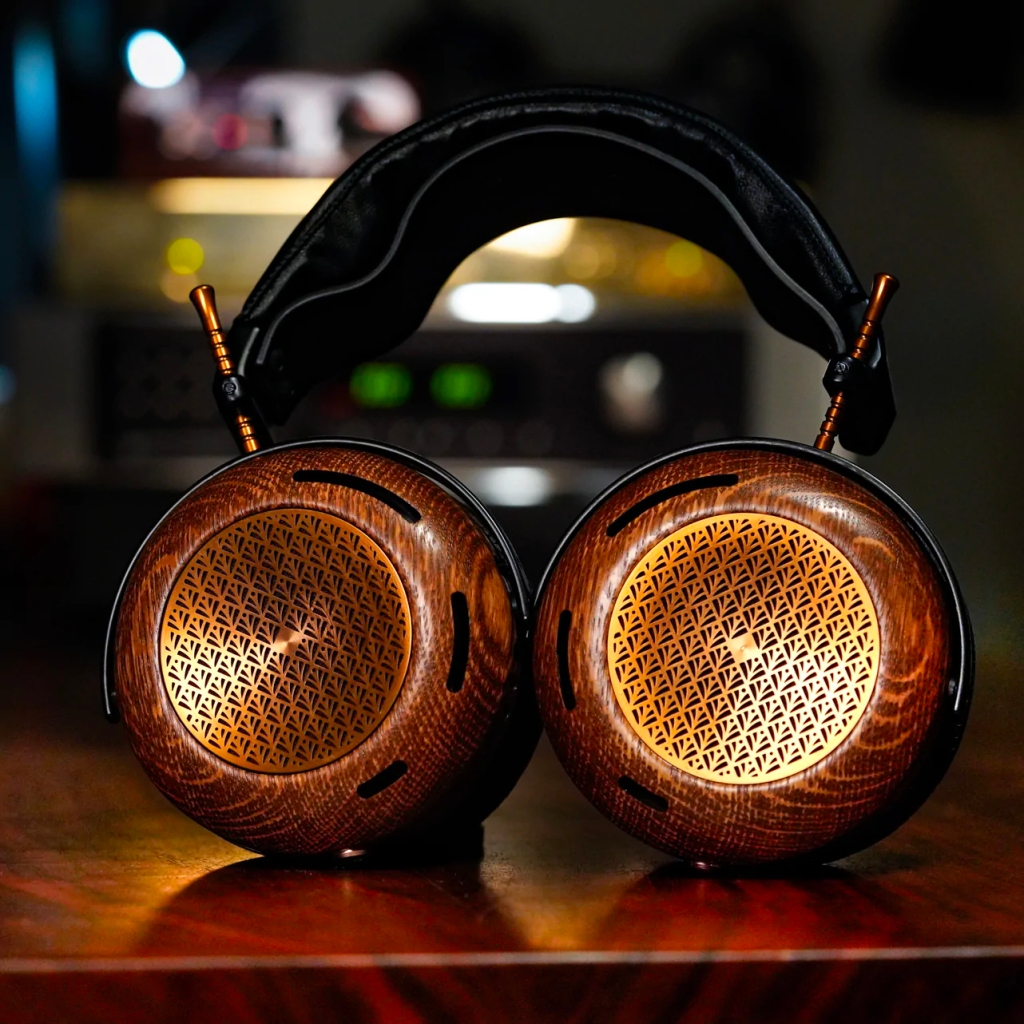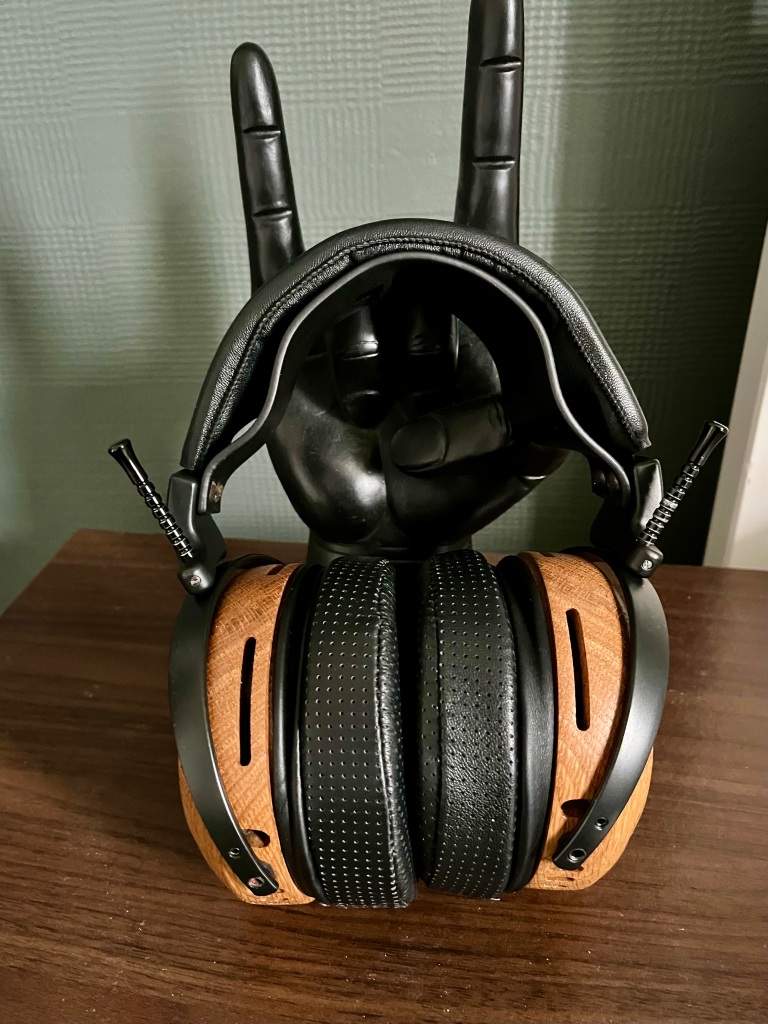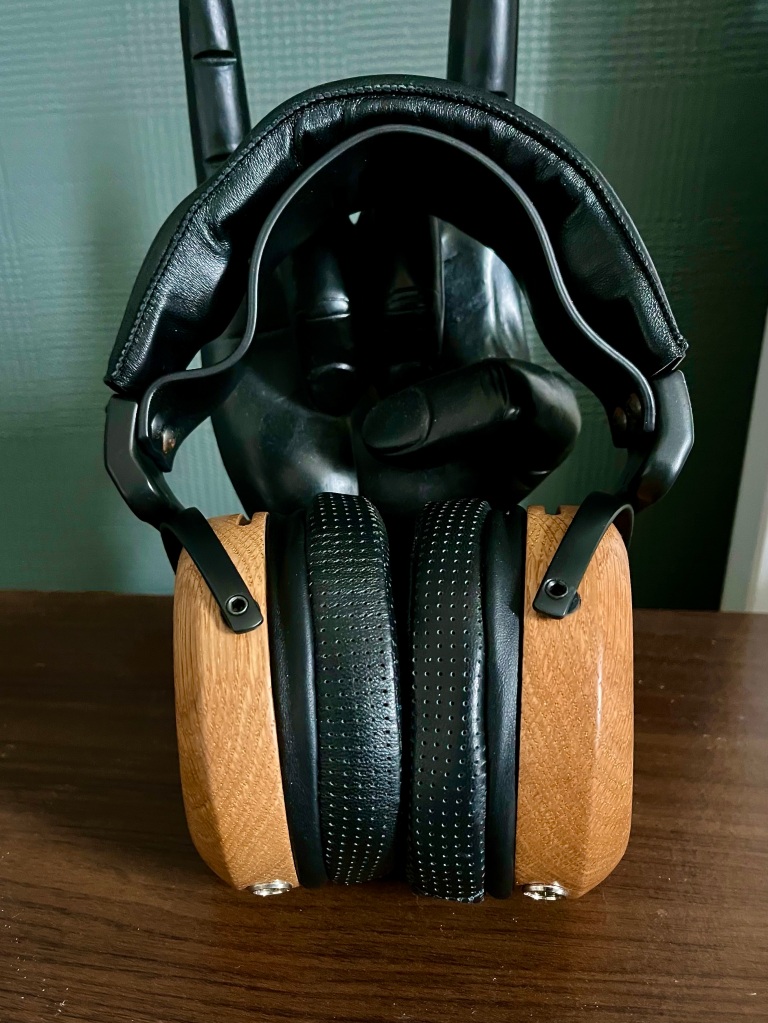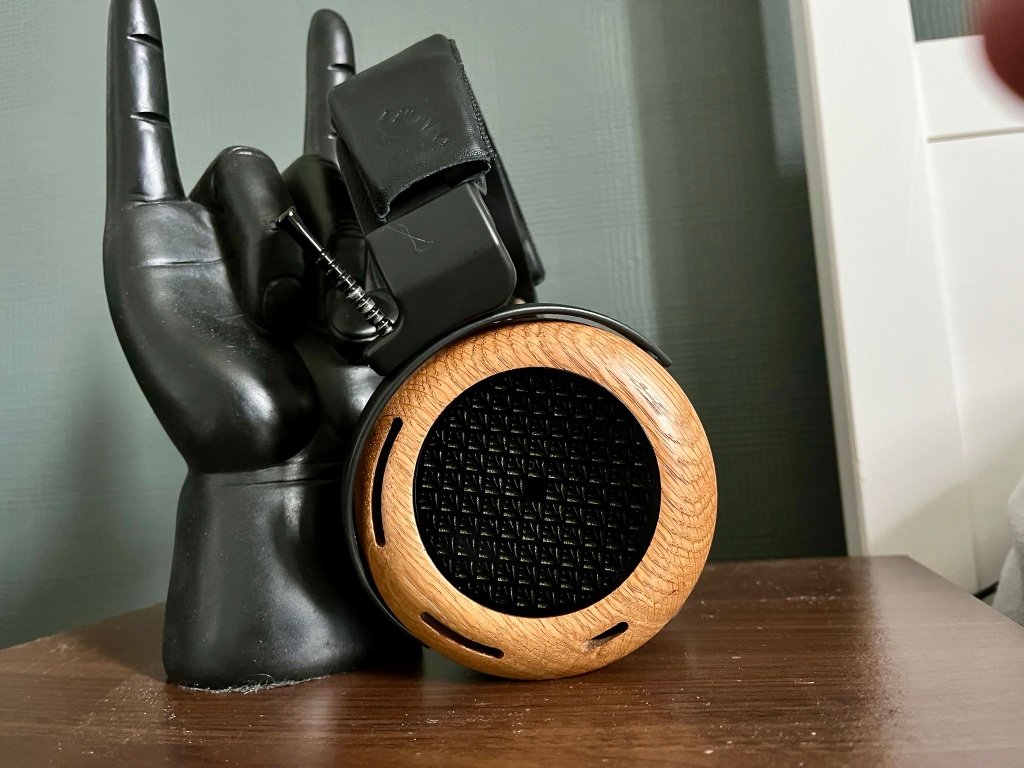Hey guys, I'll copy my Caldera review below, but its also over on my blog (in my signature) if you are interested.
"
Introduction
Hi Guys,
Today we are talking about the current Flagship headphones from ZMF, the Caldera. This is ZMF’s first entirely in-house designed and built planar magnetic headphone, and although ZMF has become mostly known for their high impedance dynamic driver headphones, the company’s roots are in providing modifications of Fostex T50 planar magnetics. Sadly, I’ve never actually heard any of ZMF’s older T50 modifications, but they had a bit of a cult following and there are still many people using them out there to this very day. Thankfully I do have some experience with other ZMF headphones, which I reviewed a few years ago on this blog. Those two headphones were the Eikon, a bio-cellulose closed-back dynamic driver, headphones, and the Verite, an open-back beryllium-coated dynamic driver headphone. I really enjoyed both of those headphones, so I was very curious how things had evolved in the time period since those reviews, and also very curious what Zach (owner of ZMF headphones) had come up with in terms of his first proprietary planar magnetic driver-based headphones.

Aged Oak with Coffee Gold Hardware (from ZMF website)
In terms of looks, the Caldera is incredibly similar to other ZMF headphones. Artisan wooden earcups being the main visual feature, of many different types. The pair of Caldera that I have here for review is the current stock option, natural oak wood with black hardware. This currently retails for $3500USD, but there is another stock option at a $200USD upcharge which comes with an aged oak finish and coffee gold hardware. In the time elapsed since the last two reviews of ZMF headphones on this blog, Zach and the team at ZMF have massively increased the number of cosmetic options available. These come in the form of the usual limited edition wood runs, but also stabilized wood runs and stabilized/resin combo runs. These headphones vary massively in terms of colours and figuring of the wood, and also have various hardware colour combos, resulting in some truly spectacular-looking builds. I would never be able to fully feature all the different looks of these runs, so I will provide a link instead to ZMF’s YouTube. To be clear, this is not an affiliate link or sponsored in any way shape, or form, its just the easiest way to share
some of the many looks now available from ZMF (
)
The Caldera follows suit with the rest of the ZMF headphones lineup in that there are many different options in terms of pads to help tailor the sound to your personal preferences. There will always be traits that the headphones have across all pad options, but they certainly do vary widely, depending on the pads you choose. For the rest of this review, I will be speaking about the Caldera with the stock leather pads installed. I will then cover the individual pads and their specific sound traits in a separate section later in the review.
Sonic Impressions
The bass of the caldera in terms of level is pretty much entirely flat, which is fairly characteristic of most planar magnetic headphones these days. That means that whilst they are definitely not bass light, or rolled off in the low end, if you prefer a more robust bass response (as I do) you can play about with boosting the low end via EQ. However, there are many people who I think will enjoy the bass in its stock tuning, and the tonal balance can also be tweaked with different pads as mentioned before. In terms of low-end impact, the Caldera was very similar to the LCD-5 I also had during the time of this review. This aspect did change quite drastically with the different pad options, but with the stock pads, the Caldera is not far behind the Abyss 1266TC, and again very similar to the LCD-5, providing a real amount of heft to kick drums, bass strikes, etc. In terms of speed and deftness of the bass response, the Caldera is right in the middle of the pack when it comes to top-of-the-line planar magnetic headphones. It isn’t fast, and it isn’t slow, it plays it straight down the middle. Overall, I was very happy with the low end of the Caldera, it is a standout in some areas, can be tweaked with the different pad choices, and increased easily via EQ to your preference if need be.
The mid-range of the Caldera was a change of pace from what I was expecting, and does show how ZMF doesn’t necessarily have a specific “house sound” these days, but individual headphones which all have their own characteristics and special qualities. I think in the past I have incorrectly associated ZMF with a slightly thicker warmer presentation, but that is not the case with the Caldera. Of course, this is with the stock pads and as I mentioned things can change with the pad choices, but with the stock pads, I would describe the lower mids as pretty much neutral, and the upper mids as being quite forward, in part. There isn’t any warm, gooey thickness in the low mid-range. They aren’t scooped out, or cold, leading to a v-shaped signature, but they definitely don’t come across as being boosted in any way. In the recent Audeze LCD-5 review I did, I spoke of the 3khz peak, and how it was problematic for me. With the Caldera, it is actually around about the 2khz range that there is a peak to my ears, and that 3khz is actually pulled back. I
really like this take on upper-mid tuning. That increase in the 2khz region helps with things like rim shots on snare drums, stabs of synthesizers, and crashes of cymbals. When it is combined with that 3khz peak being pulled back, for me and my personal preferences, it sort of gives you the best of both worlds. The impact, and forwardness that helps keep things exciting, with just enough of the area that can make things harsh and grating reduced. Overall, the mid-range of the Caldera is one of my favourites out of all headphones in its stock tuning. There are no areas that annoy me or peaks that are too harsh, and the low mids aren’t too pulled back and sucked out, or overly increased and warm, losing perceived detail and technical performance.
The treble of the Caldera, using the stock pads, is very, very, slightly north of neutral. For me personally, I do prefer a tiny bit more high-end presence, but I could very happily listen to the Calderas treble in its stock form with no issues whatsoever. Compared to the LCD-5 which I felt really lacked treble energy and level, the Caldera is much more in line with my personal preferences. Having the treble slightly increased over being neutral helps keep things lively and also helps with perceived detail levels and technical performance, whilst not being overly boosted also helps provide a frequency response that isn’t bright, grating, and difficult to enjoy for long periods. Of course, as mentioned previously this can be tweaked with the various pad choices, but with the stock pads, it is just very slightly increased over what I would call a neutral treble response. The speed of the treble is very similar to the speed of the low end, in that it pretty much finds itself right in the middle of the pack compared to other flagship planar magnetic headphones. It isn’t fast and zippy like the Susvara, but it is quicker and has a better transient response than the Meze Elite’s.

Technical Performance
The overall technical performance of the Caldera is very solid, and I do think it is the best of the ZMF headphones that I have been fortunate enough to hear. The Caldera seems to excel at the “macro” side of things more than the “micro” side of things (in terms of detail,) but isn’t a slouch at either. In terms of micro detail, the Hifiman HE1000 which was originally also priced at $3500USD, does provide more information and low-level detail, but in terms of the larger details, I would say that they are fairly close to each other. The soundstage of the Caldera is fairly mid-sized (with the stock pads), but where it excels is depth and 3D holography within that mid-sized soundstage. This depth and holographic nature is most noticeable with the stock pads, though the other pad options bring other qualities whilst lessening that aforementioned one. The Caldera isn’t the fastest or most detailed driver out of the current TOTL planar magnetic headphones (which also cost significantly more money, which cannot be understated,) but it has a quality that I don’t find in those other faster more detailed drivers. It is hard to describe but there is a “meat on the bones” and toothsome nature to the Caldera, entirely unrelated to frequency response, that I find incredibly compelling. They are just fun to listen to, and sometimes that is worth more than any detail or driver speed ever could be. With all of that being said, I have to make myself clear here, the Caldera is not a slouch of any sort when it comes to technical performance (detail, speed, etc..) it is incredibly competent, the best from ZMF that I have heard, and only slightly trailing behind headphones like the LCD-5 in these areas. I suppose I am trying to convey that the Caldera has other traits that I feel also fall under this area of the review which are harder to quantify, but very important to the overall experience and enjoyment of the headphones.

Build Quality
The Caldera follows suit with other ZMF headphones in terms of fit, finish, and build quality. That is to say, excellent. Since I reviewed the Verite and Eikon, the ZMF headband has been slightly improved. It is now wider and seems to distribute the weight of the headphones much better. I found it very comfortable for long listening periods. The Calderas weight will depend on the wood used but this pair I have for review in the stock option comes in at around 500 grams. Although the Caldera is not as comfortable as the Meze ELITE, which is a class leader in this area, I had no problems with the Caldera’s comfort over the review period. The 500 grams isn’t too much, and it is distributed nicely with the new headband design. The Caldera comes with the ZMF stock OFC cable, a pair of stock pads, and a pair of your personal choice of pads. The Caldera have a 60ohm impedance, and 95 dB/mw, so they are really quite easy to drive, especially compared to something like the HE6 or the new Modhouse Tungsten’s. One thing to mention is that if you have other headphones in the ZMF lineup which are high impedance dynamic driver based, and also have an amp specifically for them (say a low power OTL Tube amp) and want to acquire a pair of Caldera, it may be worth trying out other amping options with the Caldera. Sadly I do not have any tube amplification currently, but I did experiment with a few different solid-state options, and the Caldera seemed to enjoy a healthy amount of power and current. With that being said, I must note that the Caldera is fairly easy to drive overall, and will work with a large amount of amps. Some experimentation here is worthwhile, but it doesn’t need to be a power monster as it might with some other current flagship planar magnetic headphones.
Pad Options and Mantle Mesh
Now, let’s talk about the various pad options for the Caldera. For this review, I had pairs of the following
-Caldera Stock Leather
-Caldera Thick Leather
-Caldera Thin Cowhide
-Caldera Suede
-Caldera Thin Ultra Perforated
-Mantle Mesh (not a pad, explained below)
Caldera Stock Leather: The stock pads ended up being my favourite out of all the options I tried. They provided the best impact and slam, whilst also dialing up the soundstage depth and holographic 3D nature of the Caldera. Their negatives were that they shrunk the soundstage slightly, and also the overall image size shrunk slightly. The stock pads also provided my favourite tonal balance, being mostly neutral with a good balance overall. I also preferred a slightly low-shelf increase applied via EQ with the stock pads, but that is entirely personal preference-based, so I would recommend a bit of experimentation to find what works best for you.
Caldera Thick Leather: These pads actually ended up being my least favourite out of all the options. They slightly increased the low mids area and perceived warmth of the Caldera. I felt they didn’t really add anything of note to the soundstage and imaging of the headphones, but caused a loss of that depth of soundstage and holographic 3D nature I enjoyed so much with the stock pads. With all that being said, I read an impression on a forum thread recently that someone prefers the Caldera Thick pads, so as always, personal experimentation is key here, and finding what works best for *you.*
Caldera Thin Cowhide: The Caldera Thin Cowhide pads were my second favourite pads out of the ones I had here for review. They opened up the image size and made everything sound slightly larger and grander. You lose some of the depth of soundstage that you have with the stock pads, but it is a trade-off for the larger overall image. I also found the cowhide helped bring out some of the detail in the treble, whilst not increasing the perceived amount of treble, which I found surprising due to how thin the pads are. You do lose a slight amount of perceived low end with the thin cowhide pads, but again I increased this with EQ so had no problems with that.
Caldera Suede: The Caldera suede pads off the bat are the most comfortable of the pad options, which is pretty standard for me as I always seem to enjoy the feel of suede vs leather. In terms of sonic performance, the Suede Caldera pads reduce the resonance of the Caldera sound, making everything sound slightly more dry and well separated. You lose some low-end impact and slam with these pads, but the soundstage does open up and the overall image size is larger, similar to the cowhide pads. I don’t think I would choose the suede pads as my main pair of pads for the Caldera but they would make a very compelling secondary option if you plan to only have two pairs of pads (the stock being the other pair.)
Caldera Thin Ultraperforated: The ultra-perforated pads are interesting. You definitely lose a lot of what the stock pads bring to the table, in terms of that holographic nature and soundstage depth, but they open up the airyness of the treble, whilst also increasing the image size. They don’t sound as dry as the Suede pads but do seem to very slightly increase the perceived amount of detail present. I went back and forth about these pads more than any of the others. I don’t think I would choose them as a primary or even secondary pair, but if you are curious they do offer some interesting qualities if you are looking for a good third option.
Mantle Mesh: The Caldera can also use what ZMF has called the “Mantle Mesh.” This is a $20 dollar extra which is applied directly over the driver by the user. What the Mantle mesh does essentially is create an effect of extra dampening of the driver, reducing the upper mids and treble frequencies. When I received the Caldera, I hadn’t realized that the Mantle Mesh was installed, and I found the upper mids and treble overly attenuated and thought it was a fairly dark stock tuning. Of course, once I realized the Mantle Mesh had come installed stock, I removed it and was greeted by a much more agreeable (to me and my ears) stock tuning. If you are someone who is particularly treble sensitive, this could be an absolute lifesaver of an upgrade, and would highly recommend it if you struggle with highs and upper mids of the Caldera. For the average person, I’m guessing it would simply blunt the sound too much, and make things too dull and smoothed over. The mantle mesh is a really great idea for certain people and could take the Caldera from an “ow! that’s so bright” to “this is awesome” experience.

Conclusion
Overall, the ZMF Caldera are a really great pair of headphones. They seem to be the culmination of the entire history of ZMF headphones thus far. From humble Fostex T50 mods to a bespoke in-house designed planar magnetic driver-based headphone, it’s really been neat to watch ZMF grow and continue to innovate. The Caldera has all the hallmarks that ZMF has become known for – Artisan Wood cups and distinct tunings, All done in-house by a team of people who themselves headphone enthusiasts. I sadly haven’t every ZMF headphone, but I have heard a few and the Caldera is certainly my favourite thus far. It is the highest performing in terms of technical performance but is also simply fun and enjoyable to listen to. I found myself going back and listening to old favourites simply because they were great to hear again with the Caldera. The Caldera can be tweaked via pads, and the Mantle Mesh, to your personal preference, and if you don’t mind waiting for a release date and spending a bit more, there are
all sorts of cosmetic options for the Caldera, so finding one that suits you in terms of looks shouldn’t be too hard. Personally, I really like the stock-aged oak with coffee gold, but the sheer variety of the woods in the stabilized releases is pretty amazing. The Caldera is less expensive than a lot of the top-of-the-line flagship headphones these days at $3500USD retail, but offers technical performance coming close to many of them. On top of that technical performance, it has its own unique sound signature that is incredibly enjoyable, whilst having some of the best build and support on the market. Overall, I really enjoyed my time with the Caldera, and I definitely give it a thorough recommendation, especially if you are looking for a planar magnetic flagship headphone, but want something a little bit *different.* Awesome job Zach and the team at ZMF!"
 )
)
)








